Imagine stepping back in time, creeping through ancient forests or dusty plains, and locking eyes with a feline stranger—one whose ears, tail, or feet are downright weird by today’s standards. Prehistoric cats weren’t just bigger lions or saber-toothed tigers; some had features so strange you’d think they were cooked up by a sci-fi movie. From tufted ears to club-like tails, these wildcats were nature’s original oddballs. Ready for a stroll through a gallery of wild, wonderful, and wacky ancient cats? Let’s dive in!
1. Smilodon’s Oversized Saber Teeth Stole the Show
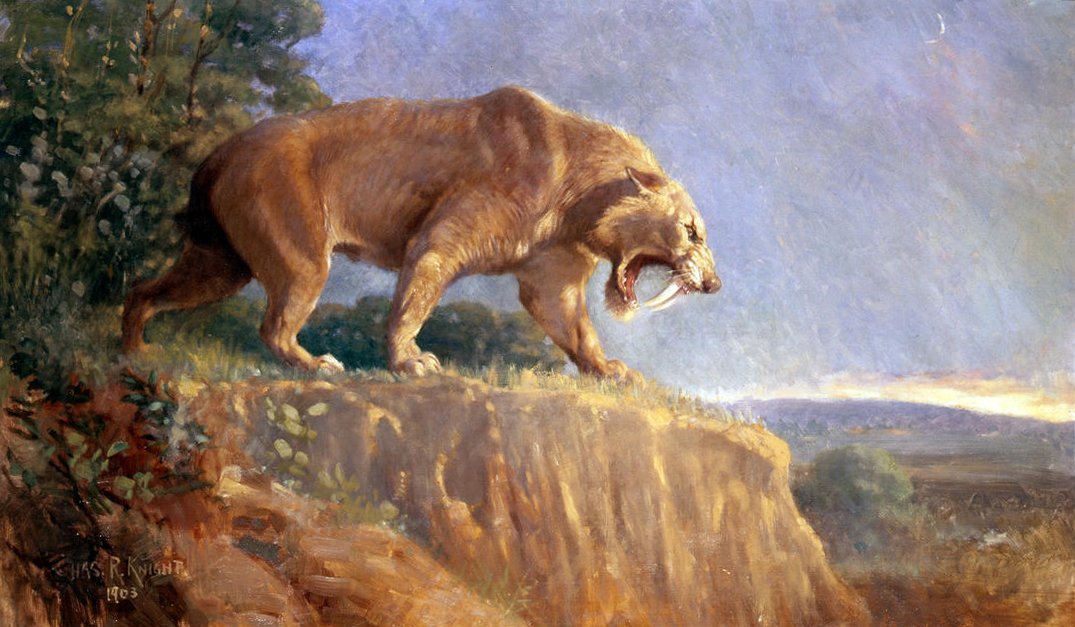
Smilodon, better known as the saber-toothed cat, had giant, curved teeth that could reach over seven inches long—but its tail was a surprise. Unlike today’s long-tailed lions, Smilodon’s tail was short and stubby, almost bear-like. This odd tail may have helped it stay balanced as it pounced on massive prey. Imagine a housecat with a bobtail and fangs you couldn’t miss! While its fangs made it famous, the tail reveals it was built more for ambush than for chasing. In fact, the tail’s unusual shape hints that this cat relied on stealth and muscle, not speed, to rule the Ice Age.
2. Homotherium’s Crooked Smile and Stumpy Tail
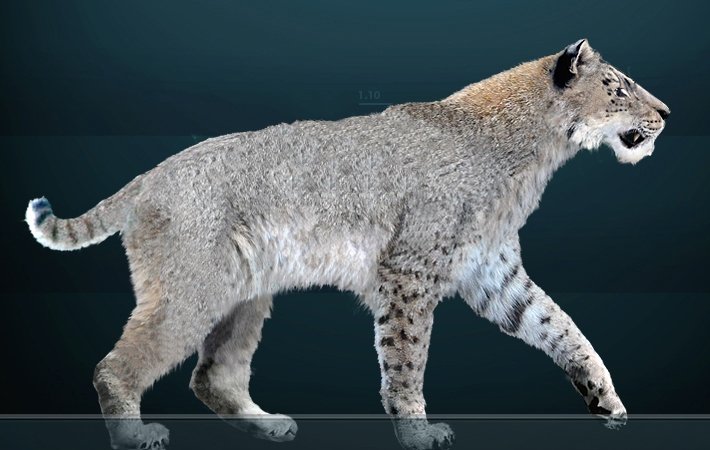
Homotherium, sometimes called the “scimitar cat,” didn’t just have shorter saber teeth—it also sported a weird, blunted tail that looked almost unfinished. This tail set it apart from the sleek, swishing tails of modern big cats. Instead of using its tail for balance during fast chases, Homotherium may have used it for quick turns in dense forests. Its ears were oddly rounded, unlike the pointed ones of today’s felines. The combination of a stumpy tail and unusual ears gave Homotherium a silhouette that wouldn’t be out of place in a fantasy novel.
3. Dinofelis Rocked Funky Ear Tufts
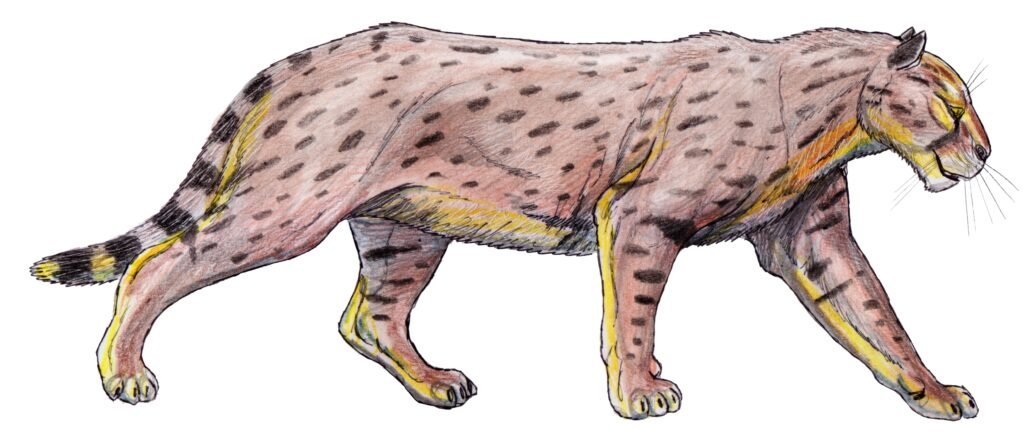
Dinofelis, whose name means “terrible cat,” looked surprisingly elegant thanks to its exaggerated ear tufts—think lynx, but more dramatic. These tufts might have helped with camouflage or communication, letting it signal other cats in the shadows. The ears themselves were tall and wide, making Dinofelis look alert and a little wild-eyed. In dense jungles, those ear tufts could have doubled as clever disguises among the leaves. If you’ve ever seen a Maine Coon’s fluffy ears, picture them twice as long and you’re getting close to Dinofelis’s prehistoric style.
4. Machairodus Had Paws Built Like Sleds
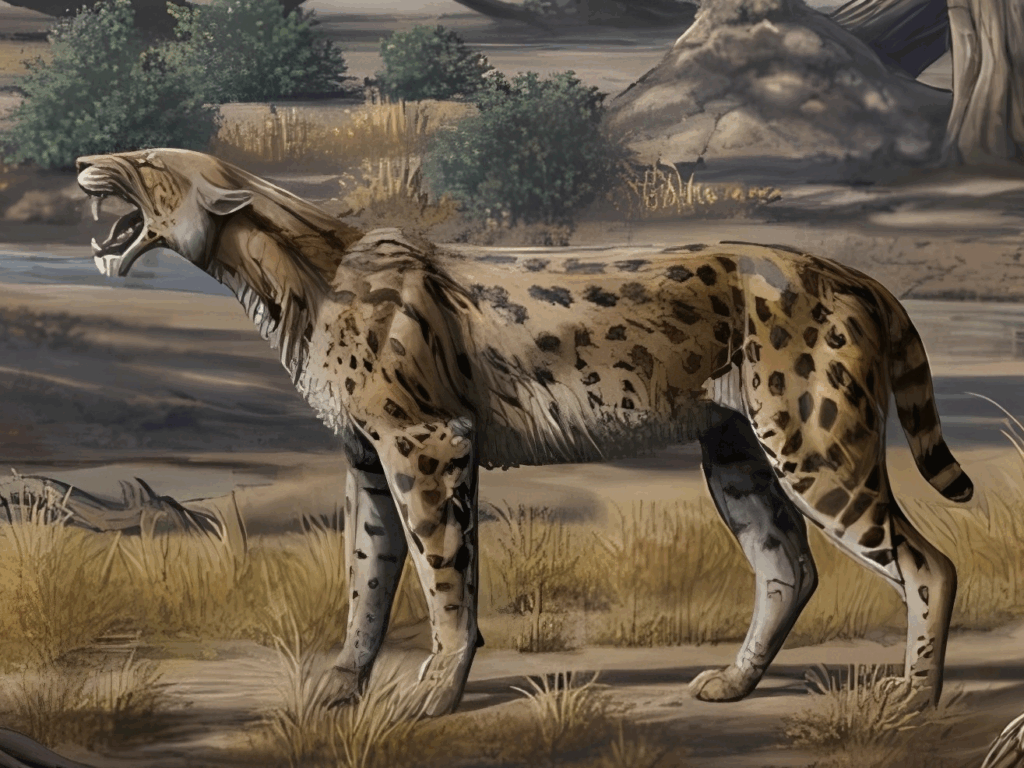
Machairodus was a saber-toothed cat with feet that looked almost too big for its body—its toes were splayed out like a snowshoe’s. These wide paws helped it move across muddy ground or snowy plains without sinking. Some paleontologists think its paw pads were extra thick to cushion its bulk. Imagine your housecat’s dainty feet swapped out for clown shoes, and you’ll get the idea. These paws weren’t just funny-looking—they were a serious adaptation for stalking prey in slippery environments, giving Machairodus an edge in tough terrain.
5. Xenosmilus Mixed Up Saber Teeth and Bear Feet
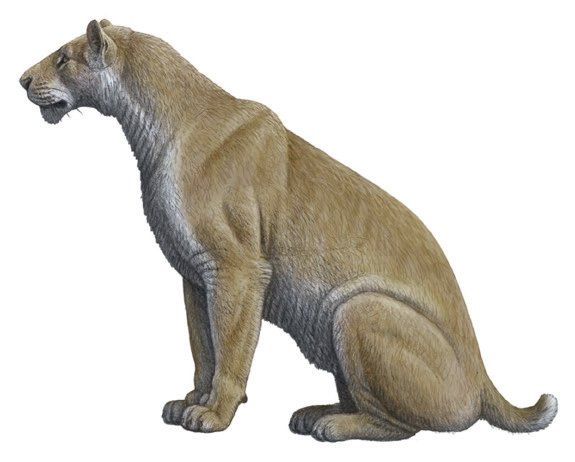
Xenosmilus was a prehistoric puzzle: it combined the saber teeth of a Smilodon with the chunky, bear-like feet of a grizzly. Its toes were short and powerful, built more for gripping than for speed. This cat’s paws looked almost like mittens, with thick claws and a wide spread. The odd feet helped Xenosmilus wrestle down large prey, pinning them with a wrestler’s grip. Its tail was short, adding to its bear-like charm. Xenosmilus proves that prehistoric cats didn’t play by today’s rules—they mixed and matched features for a look all their own.
6. Megantereon’s Oddly Curved Saber Teeth
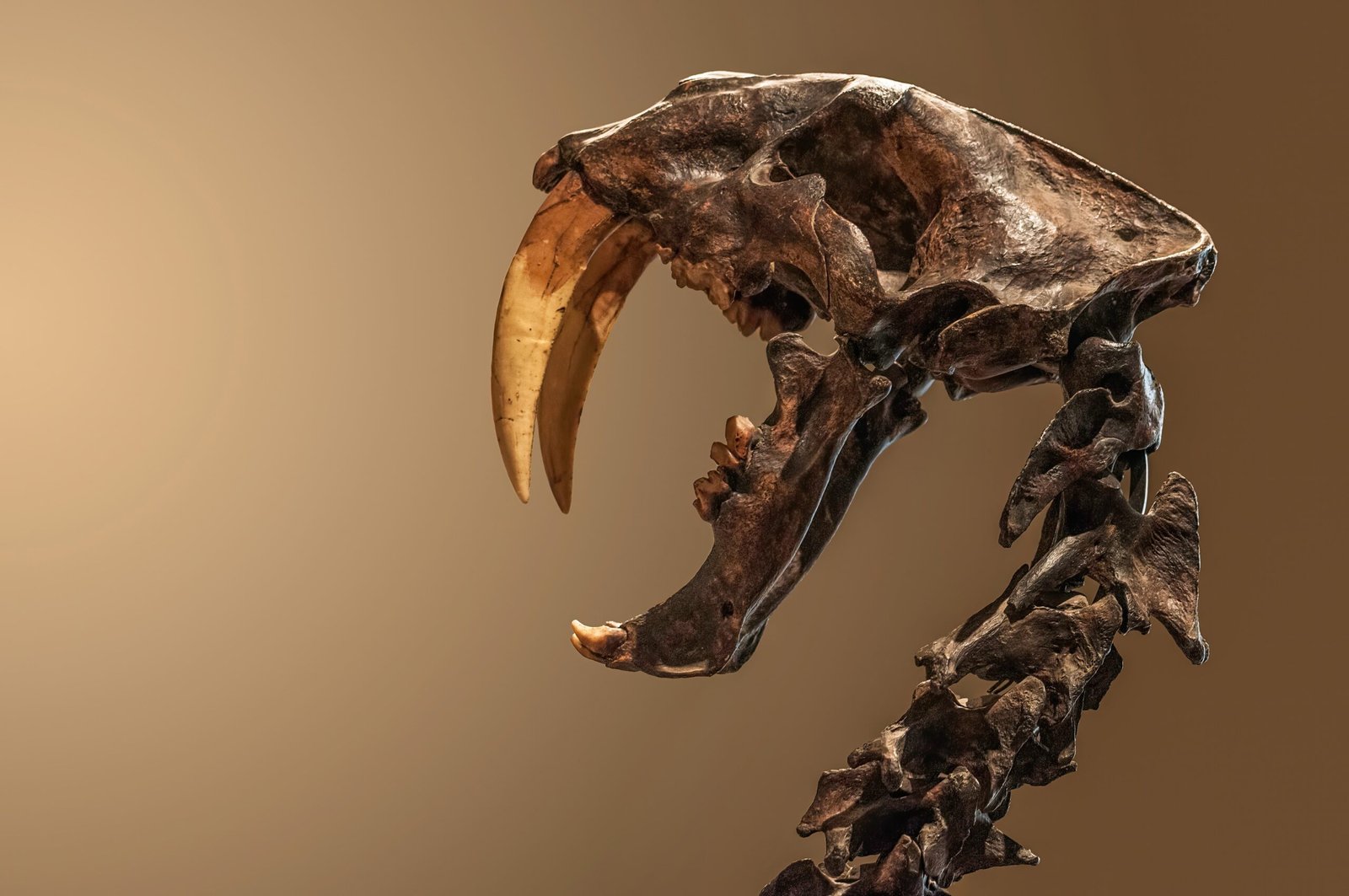
Megantereon sported saber teeth that were not just long, but dramatically curved—almost like a banana! These teeth stuck out even when its mouth was closed, making the cat look perpetually fierce. Its ears were small and round, contrasting with the fierce fangs. The combination of tiny, teddy-bear ears and monster teeth gave Megantereon a truly unique face. Imagine a fierce saber-toothed cat with the gentle ears of a plush toy—it’s a look you wouldn’t forget! These features probably helped Megantereon grip and hold struggling prey, showing Mother Nature’s flair for the dramatic.
7. Proailurus: The Cat With a Squirrel’s Tail

Proailurus, often called the “first true cat,” had a tail that looked more squirrel than feline—long, fluffy, and perfect for balancing in trees. This prehistoric kitty probably spent much of its time climbing and leaping, using its tail like a tightrope walker’s pole. Unlike the short tails of saber cats, Proailurus’s tail was its secret weapon for agility. The tail helped it twist and turn in midair, escaping predators or hunting nimble prey. If today’s cats are gymnasts, Proailurus was the circus performer, dazzling with every leap and bound.
8. Panthera Blytheae Had Oddly Wide Feet
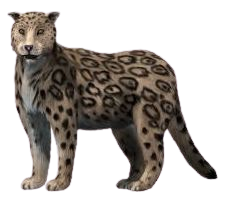
Panthera blytheae, one of the earliest big cats, had feet that were oversized for its slender body. These paws helped it walk on rocky cliffs and loose gravel without slipping. Think of snow leopard feet but even wider and fluffier! With its big paws, Panthera blytheae could stalk prey in high-altitude regions, making it a master of mountain survival. Its tail was long and strong, acting like a balancing pole on narrow ledges. This cat’s unusual feet and tail combo made it an acrobat in the ancient Himalayas.
9. Pseudaelurus’ Ears Were All About Drama
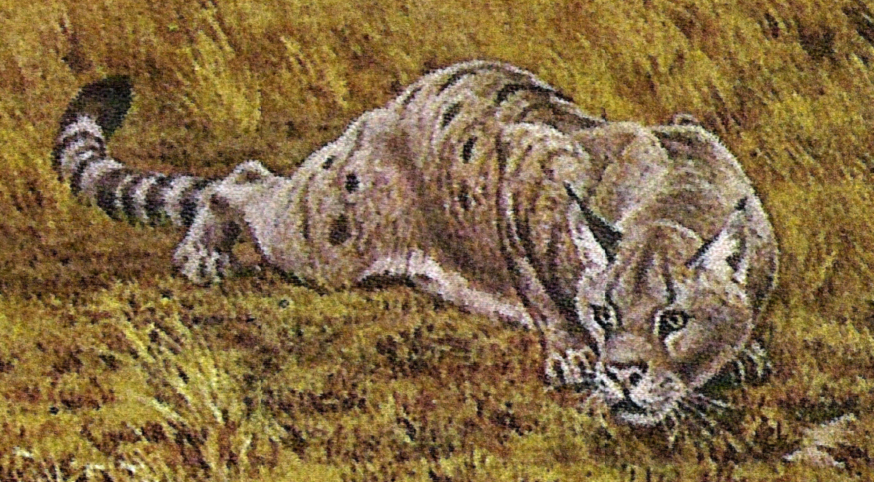
Pseudaelurus, an early feline ancestor, had oversized, triangular ears that gave it a constant “surprised” expression. These big ears likely boosted its hearing, letting it catch the faintest rustle of prey. Some paleontologists think its ears could swivel like satellite dishes, picking up sounds from every direction. Compared to modern cats, Pseudaelurus looked perpetually wide-eyed and alert. Its ears were a little like a rabbit’s—large, expressive, and always tuned in to danger. This feature made it one of the most vigilant hunters of its time.
10. Nimravus Wore Fluffy Ankles
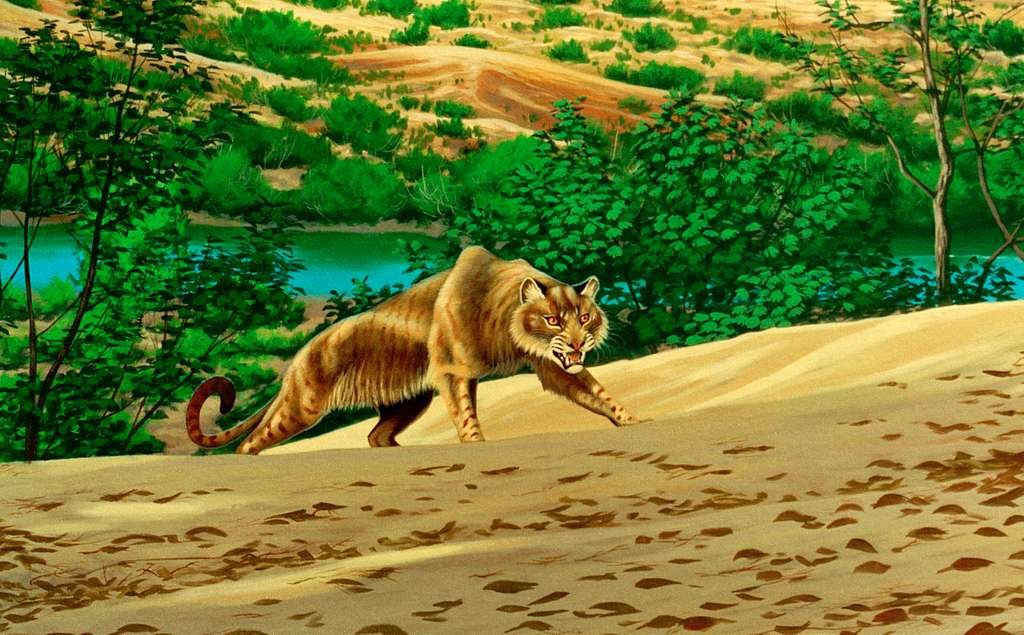
Nimravus, sometimes called the “false saber-tooth,” had long fur around its ankles and feet—almost like built-in legwarmers! This fluff likely helped protect its joints from cold or injury while running through undergrowth. The extra-furry feet also muffled its steps, making it a stealthy ambush predator. Picture a wildcat with Ugg boots, and you’ve got the right idea. Nimravus’s fluffy ankles weren’t just for show—they were a clever solution for survival in chilly environments.
11. Barbourofelis Boasted a Bobtail and Massive Paws
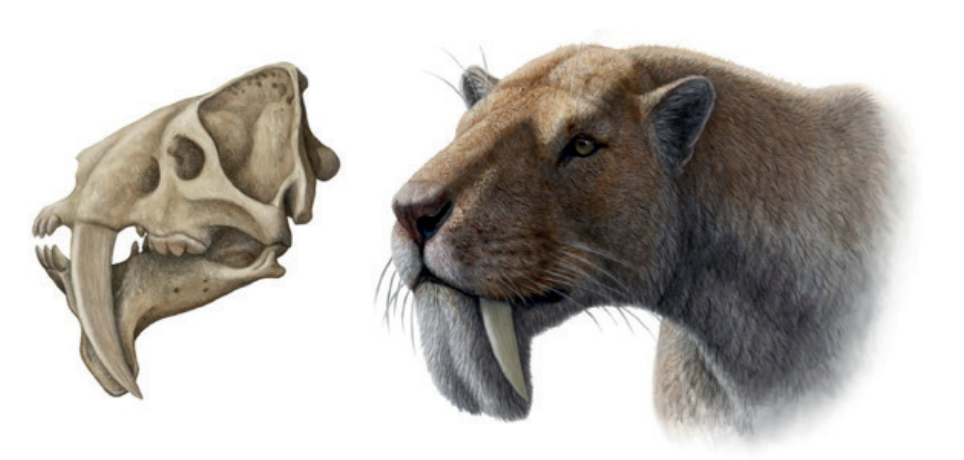
Barbourofelis looked like a mashup of a lynx and a saber-tooth tiger, with a thick bobtail and gigantic, clubby feet. Its tail was so short it almost disappeared into its fur, while its paws could flatten under its own weight like snowshoes. This strange combo helped Barbourofelis charge through forests without tripping or getting tangled in undergrowth. The bobtail also made it harder for prey to spot during a stalk. If you’ve ever seen a lynx bounce through snow, you can imagine Barbourofelis’s quirky stride.
12. Lokotunjailurus Had Super Flexible Ankles
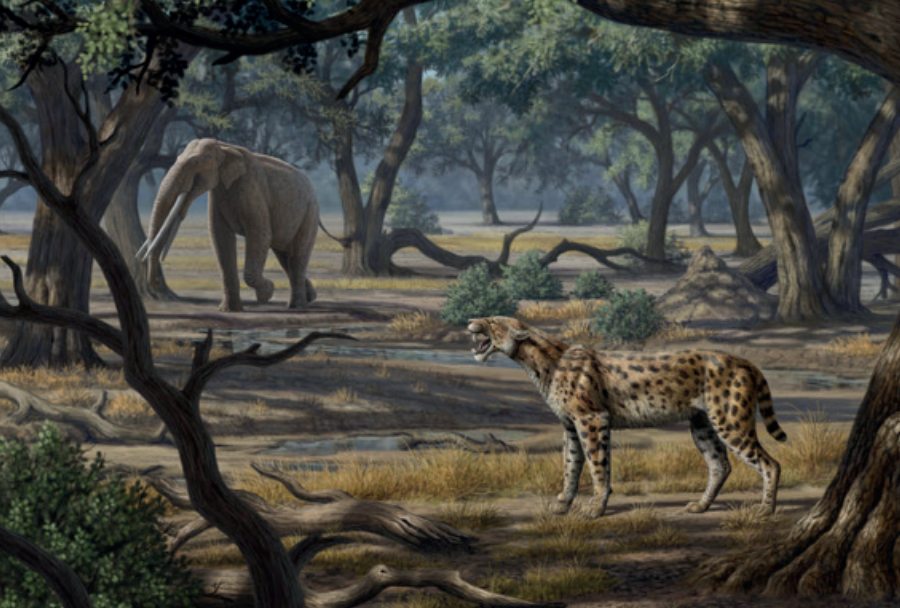
Lokotunjailurus, an ancestor of modern cheetahs, had unusual ankle joints that could twist and bend far more than today’s cats. This flexibility let it run and turn with incredible agility, almost like a slinky on four legs. Its feet were long and narrow, built for speed, but the real magic was in the twisty ankles. These adaptations set Lokotunjailurus apart from its cousins, making it a track star of the prehistoric world. If you could watch it in action, you’d see a blur darting and weaving like an Olympic sprinter.
13. Paramachairodus’ Crooked Saber Teeth and Short Tail
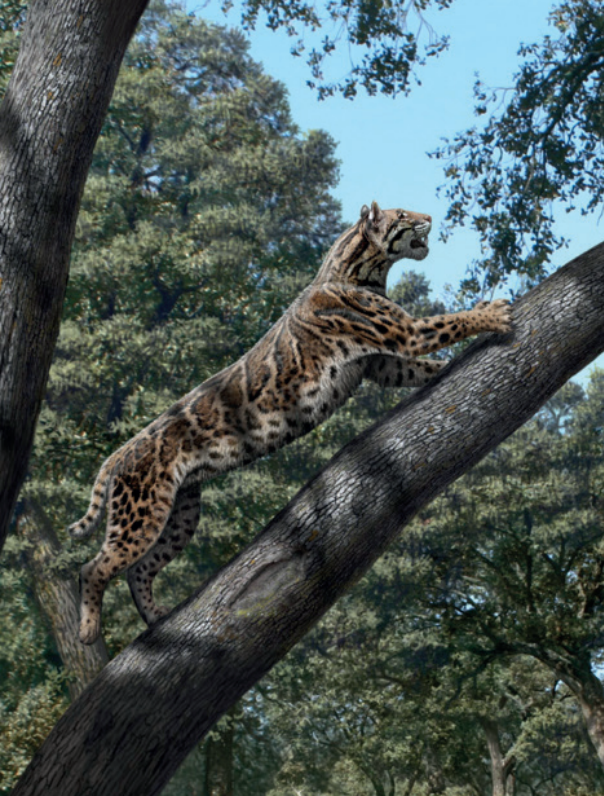
Paramachairodus had saber teeth that weren’t just long—they were slightly twisted, giving it a lopsided, mischievous grin. Its tail was short and thick, looking almost like a furry club. This odd tail helped with balance during close-range attacks, while the crooked fangs made sure prey didn’t stand a chance. The overall effect was a cat that looked both fierce and a little goofy, like a sabertooth with a secret sense of humor. It’s a combo you wouldn’t expect, but it worked for this prehistoric predator.
14. Miracinonyx: The Ancient Cheetah With Odd Paw Pads

Miracinonyx, the so-called “American cheetah,” had paws with super-thick, rubbery pads. Unlike today’s cheetahs, its feet were better suited to rocky ground than grassy plains. These thick pads helped Miracinonyx grip rough surfaces at high speeds, a bit like a race car’s tires. Its toes were long and spread wide, making its feet look almost frog-like. This cat could sprint across boulders and gravel, leaving dust in its wake. If you need a mental image, think of a cheetah crossed with a mountain goat!
15. Eusmilus’ Saber Teeth Were Paired With Rabbit Ears
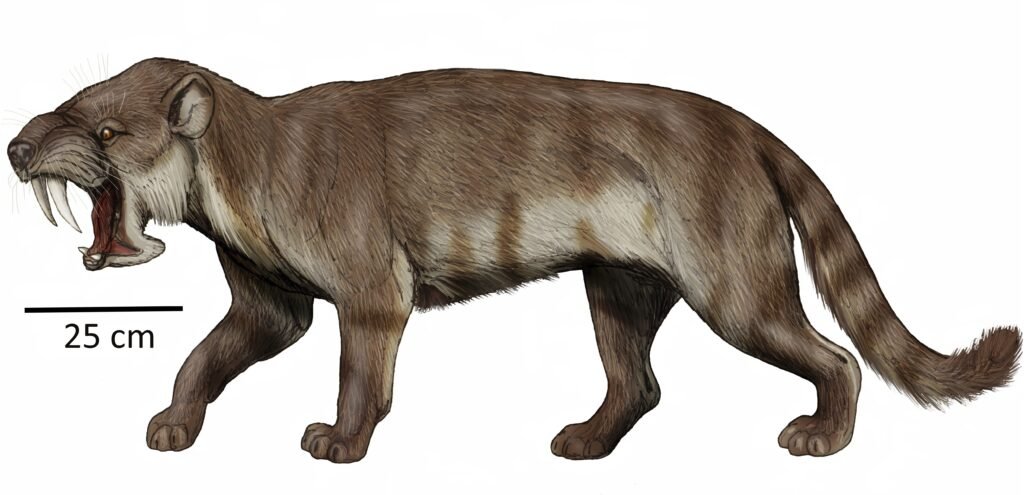
Eusmilus was a saber-tooth with a twist—its ears were tall and rounded, giving it a rabbit-like appearance. These ears helped it detect prey hiding in tall grass or behind rocks. Imagine a cat with a fierce saber-tooth grin and the oversized ears of a bunny! The combination made Eusmilus look both deadly and a little bit adorable. The ears could swivel independently, picking up sounds from all directions and making this cat a master listener.
16. Leptofelis: Tiny Cat, Enormous Ears
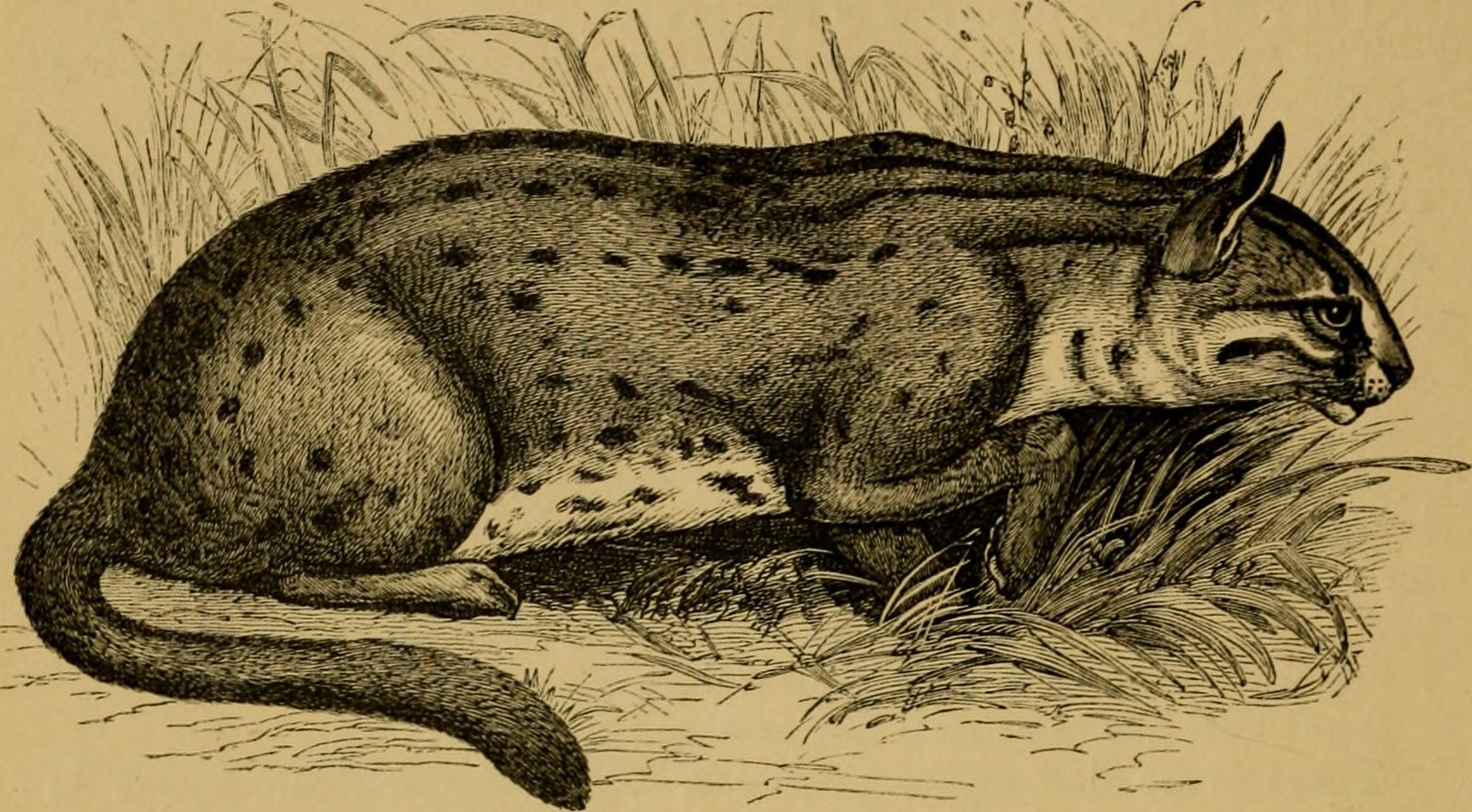
Leptofelis was a small prehistoric cat with ears so large they looked out of proportion to its dainty frame. These massive ears gave it super-powered hearing, helping it survive in open grasslands where predators lurked. If you’ve ever seen a fennec fox, that’s the vibe—oversized ears on a petite body. The ears also helped Leptofelis stay cool, radiating heat in hot climates. It’s a look that’s cute, quirky, and practical all at once.
17. Machairodus Horribilis Had Claw-Like Thumbs
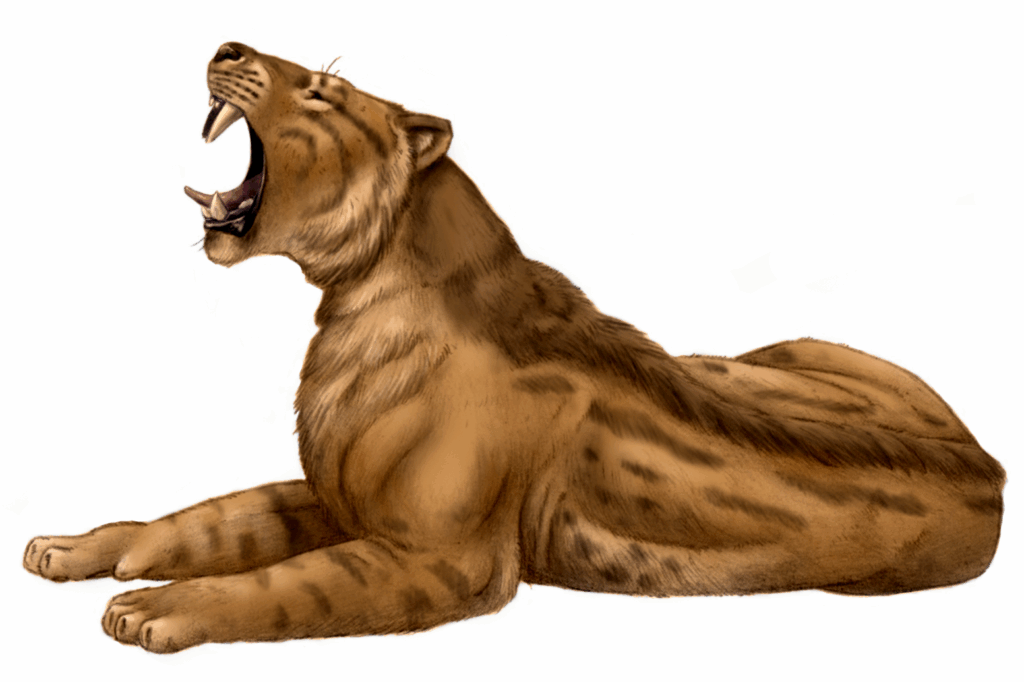
Machairodus horribilis sported “thumbs” that were extra long and curved, almost like a raptor’s claw. These thumb claws helped it grapple prey, holding on tight during a struggle. The rest of its paw was wide and flat, but the thumbs stood out like hooks. If you picture a cat with Wolverine’s claws, you’re on the right track. This adaptation made Machairodus horribilis a powerhouse in close combat.
18. Stenailurus: The Cat With a Mysterious Tail Tip

Stenailurus, a lesser-known saber-tooth, had a tail with a strange, bony tip—almost like a tiny club. Some scientists think this tail tip could have been used for communication or even as a defensive weapon. The rest of the tail was slender and flexible, but the end was thick and armored. Imagine a cat with a rattlesnake’s rattle at the end of its tail, and you’ve got a picture of Stenailurus. This unique feature set it apart from its smoother-tailed cousins.
19. Nimravid: False Saber-Tooth With Furry, Webbed Feet
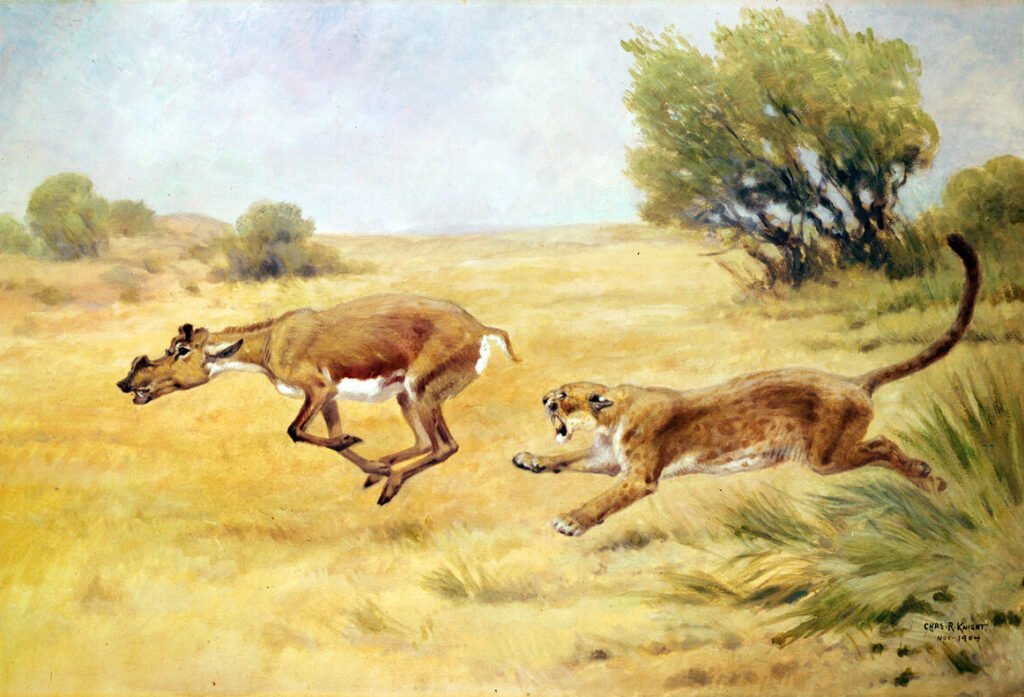
Nimravid, another “false saber-tooth,” had feet with webbing between the toes—almost like a duck’s! This webbing helped it move through marshy ground without sinking. The feet were also covered in thick fur, protecting them from mud and cold. It’s a wild mix: imagine a lynx that can paddle through swamps. These feet made Nimravid a formidable hunter in wet environments, able to sneak up on prey where others would get stuck.
20. Amphimachairodus’ Ears Curved Backward
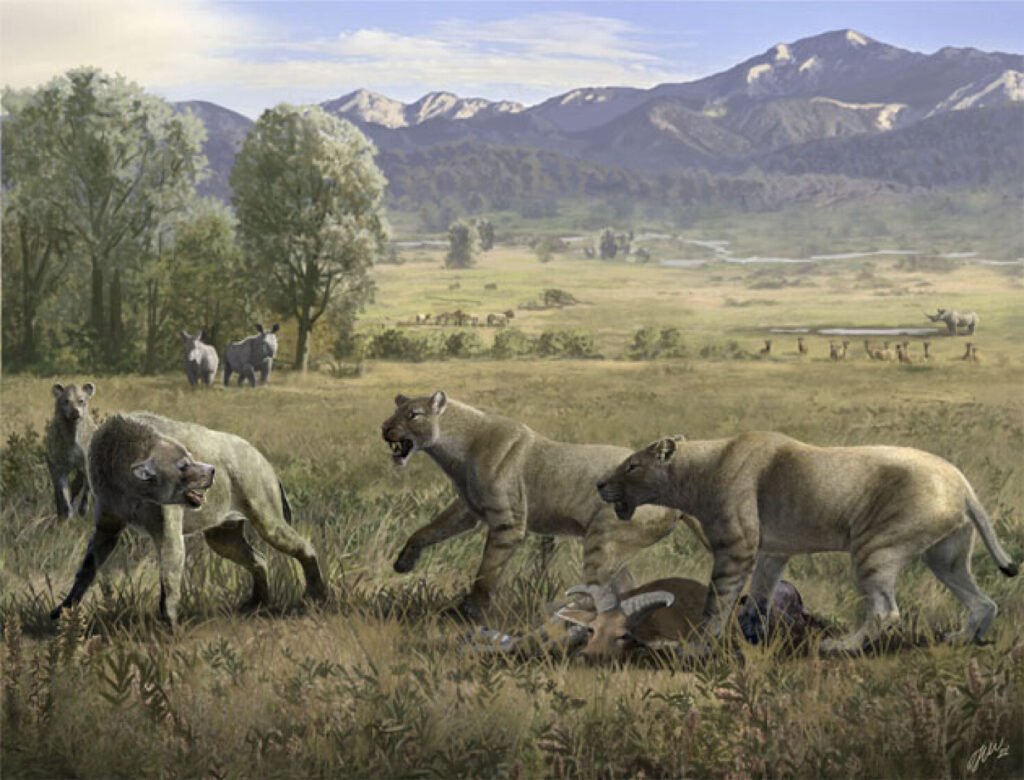
Amphimachairodus, a giant saber-tooth, had ears that curved sharply backward, almost like horns. This peculiar shape might have helped direct sound into the ear canal, giving it a hearing advantage. The ears also made Amphimachairodus look more intimidating, especially when flattened during a charge. Their odd shape is unlike anything seen in today’s cats. It’s an ancient twist on feline style that’s both practical and fierce.
21. Metailurus’ Tail Was Ridiculously Long

Metailurus, a saber-toothed cat from Asia, had a tail that was nearly as long as its body. This super-long tail helped it balance during high-speed chases or while leaping through trees. If you’ve ever seen a snow leopard’s tail, imagine it stretched out even further! The extra length made Metailurus a master of agility, able to twist and turn in pursuit of prey.
22. Pogonodon’s Feet Were Built for Digging
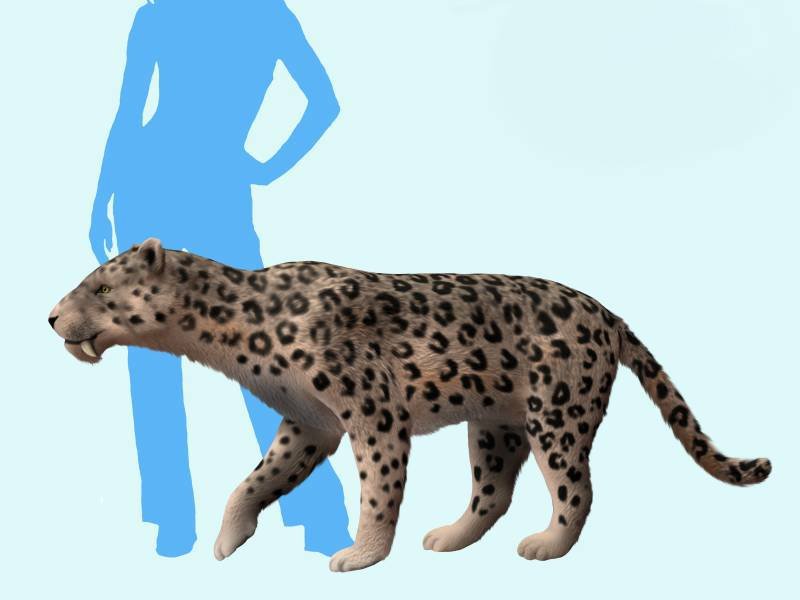
Pogonodon, a nimravid, had toes that were long and slightly curved downward, almost like little shovels. These digging feet helped it unearth burrowing prey or create hidden dens. Its paws were strong and flexible, perfect for life on the move. Think of a cat with badger-like digging skills, and you’ve got Pogonodon. This adaptation made it unique among its saber-toothed peers.
23. Adelphailurus Had a Plush, Puffy Tail

Adelphailurus sported a tail that was thick, plush, and almost cloud-like in appearance. This fluffy tail helped it stay warm during chilly nights and could have acted as a cozy pillow for naps. Its tail was also a visual signal to other cats, puffing up when threatened. Imagine a cat with a giant cotton-ball tail, and you’re picturing Adelphailurus. This quirky feature made it memorable in the prehistoric cat family.
24. Eofelis’ Tiny Body and Big, Button Ears

Eofelis was one of the smallest prehistoric cats, but its ears were huge and perfectly round—like a cartoon mouse’s. These button ears may have helped it pick up high-pitched sounds from insects or small prey. Its petite size and oversized ears gave it a look that was more cute than fierce. If you crossed a kitten with a teddy bear, you’d get something close to Eofelis.
25. Lokotunjailurus: The Cat With Springy, Bouncy Feet

Lokotunjailurus had feet with extra-flexible tendons, making each step feel like a spring-loaded jump. These bouncy feet helped it cover huge distances with little effort, almost like a kangaroo. The pads were thick and spongy, absorbing shock during high-speed chases. If you could watch Lokotunjailurus in action, you’d see a prehistoric cat bounding across the plains, graceful and full of energy.
Which of these wild cats would you love to spot on a trip back in time?

Suhail Ahmed is a passionate digital professional and nature enthusiast with over 8 years of experience in content strategy, SEO, web development, and digital operations. Alongside his freelance journey, Suhail actively contributes to nature and wildlife platforms like Feline Fam, where he channels his curiosity for the Feline into engaging, educational storytelling.
With a strong background in managing digital ecosystems — from ecommerce stores and WordPress websites to social media and automation — Suhail merges technical precision with creative insight. His content reflects a rare balance: SEO-friendly yet deeply human, data-informed yet emotionally resonant.
Driven by a love for discovery and storytelling, Suhail believes in using digital platforms to amplify causes that matter — especially those protecting Earth’s biodiversity and inspiring sustainable living. Whether he’s managing online projects or crafting wildlife content, his goal remains the same: to inform, inspire, and leave a positive digital footprint.






